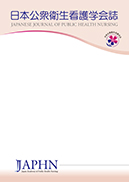Volume 10, Issue 2
Displaying 1-10 of 10 articles from this issue
- |<
- <
- 1
- >
- >|
Foreword
-
2021 Volume 10 Issue 2 Pages 25
Published: 2021
Released on J-STAGE: August 30, 2021
Download PDF (513K)
Research Article
-
Article type: Research Article
2021 Volume 10 Issue 2 Pages 26-33
Published: 2021
Released on J-STAGE: August 30, 2021
Download PDF (437K) Full view HTML -
Article type: Research Article
2021 Volume 10 Issue 2 Pages 34-42
Published: 2021
Released on J-STAGE: August 30, 2021
Download PDF (382K) Full view HTML -
Article type: Research Article
2021 Volume 10 Issue 2 Pages 43-52
Published: 2021
Released on J-STAGE: August 30, 2021
Download PDF (350K) Full view HTML -
Article type: Research Article
2021 Volume 10 Issue 2 Pages 53-61
Published: 2021
Released on J-STAGE: August 30, 2021
Download PDF (414K) Full view HTML -
Article type: Research Article
2021 Volume 10 Issue 2 Pages 62-71
Published: 2021
Released on J-STAGE: August 30, 2021
Download PDF (545K) Full view HTML
Public Health Nursing Report
-
Article type: Public Health Nursing Report
2021 Volume 10 Issue 2 Pages 72-79
Published: 2021
Released on J-STAGE: August 30, 2021
Download PDF (330K) Full view HTML
Report on Academic Practice Development Committee
-
2021 Volume 10 Issue 2 Pages 80-83
Published: 2021
Released on J-STAGE: August 30, 2021
Download PDF (1505K)
Report on International Affairs Committee
-
2021 Volume 10 Issue 2 Pages 84-86
Published: 2021
Released on J-STAGE: August 30, 2021
Download PDF (656K)
Report
-
2021 Volume 10 Issue 2 Pages 87-91
Published: 2021
Released on J-STAGE: August 30, 2021
Download PDF (651K)
- |<
- <
- 1
- >
- >|
